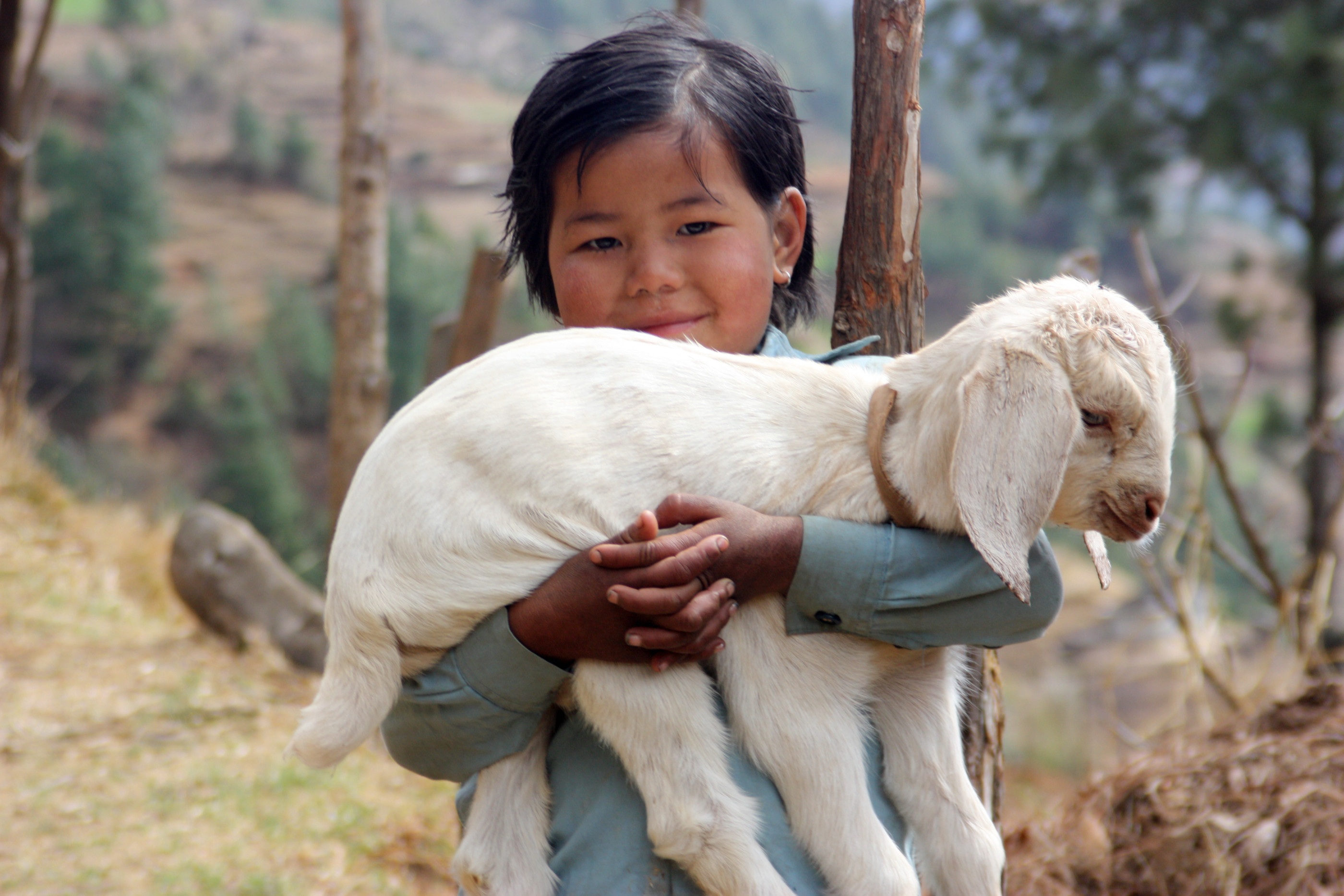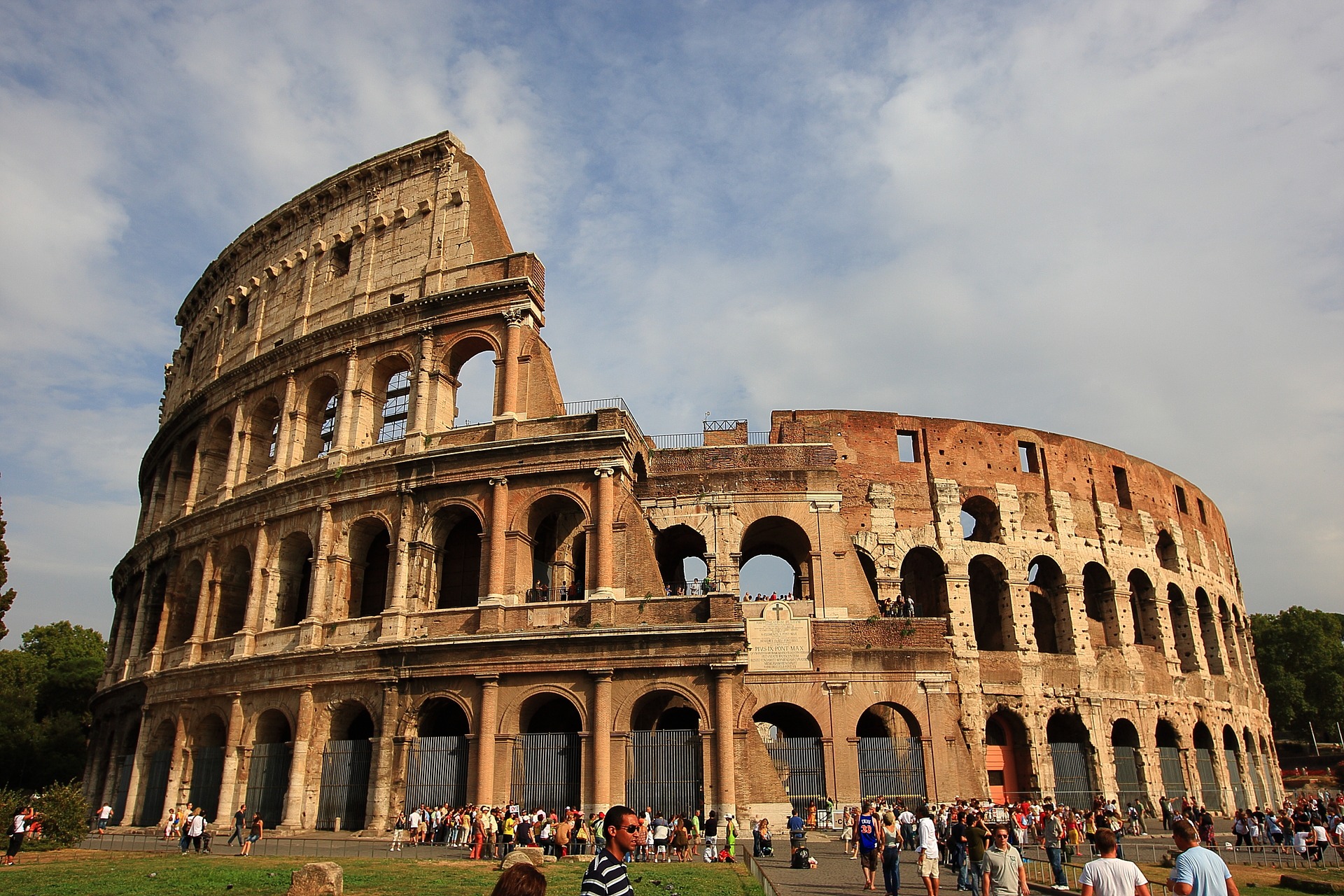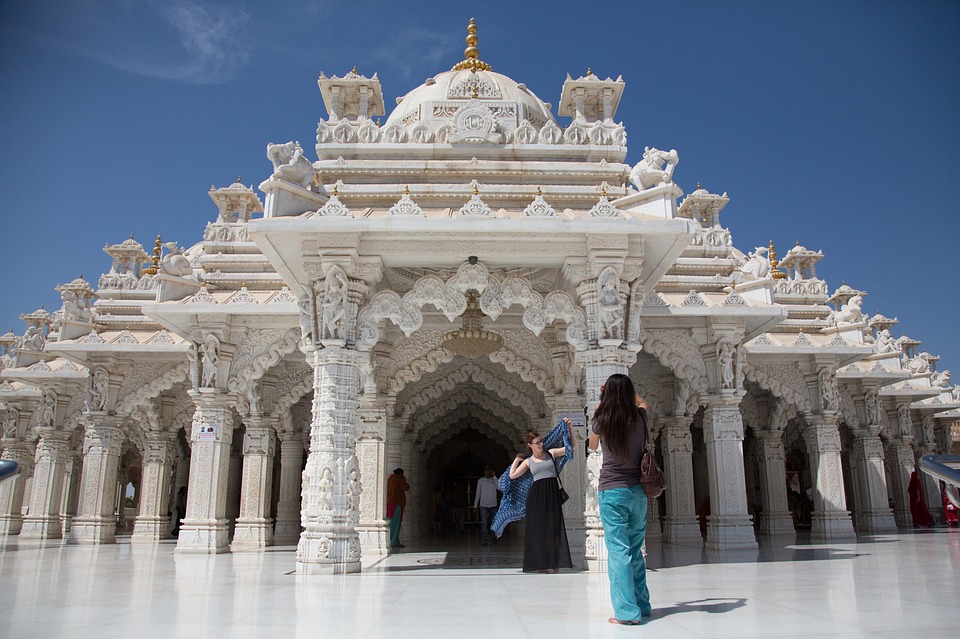Even before Scottish academics Malcolm Foley and J. John Lennon coined the term dark tourism in 1996, people have been fascinated with the macabre.
Otherwise, what would you call the public gatherings of 1816 in London to watch Public Hangings?
Again, the Battle of Waterloo site has been a place of thanatourism (tourism based on the desire to watch actual deaths or symbolic death experiences) or dark tourism through sociologist Dean MacCanell’s model of sacralization with the following stages.
- Naming
- Framing and Elevation
- Enshrinement
- Mechanical Reproduction
- Social Reproduction
Here, mechanical reproduction can be the distribution of printed or now digitized words about the site, and social reproduction can be about arranging resources.
| During the Battle of Waterloo, people witnessed the actual war and the killing of people from their carriages. |
Nevertheless, we are here to talk about dark tourism as it is getting more popular in recent times.
From 2024 to 2030, the dark tourism market is about to grow at a compound annual growth rate or CAGR of 2.9%.
Also, another interesting fact here is that India, the land of spirituality, tops the list of countries with the highest CAGR during this tenure.
India is about to get a 5.1% CAGR, while the USA is likely to achieve a CAGR of 1.5% (2024-2034).
Being from India, I know how dark tourism was at an all-time high in this part of the world after the Wayanad landslides hit on 30th July 2024, causing massive casualties of at least 150 human lives.
Along with Jallian Wala Bagh, it is now the dark tourism hotspot in India.
The situation was so grave that Kerala Police had to roll out a warning asking people to stay away from the sites of landslides and deaths.
| “Do not head to tragedy-hit spots for sightseeing. It will affect rescue operations. For help, please call 112.“ Kerala Police on X Handle |
But why is this craze for visiting places associated with deaths, tragedies, and bloodshed? Why is this a scary romance? Let’s delve deeper and explore its various aspects.
1. Introduction to Dark Tourism
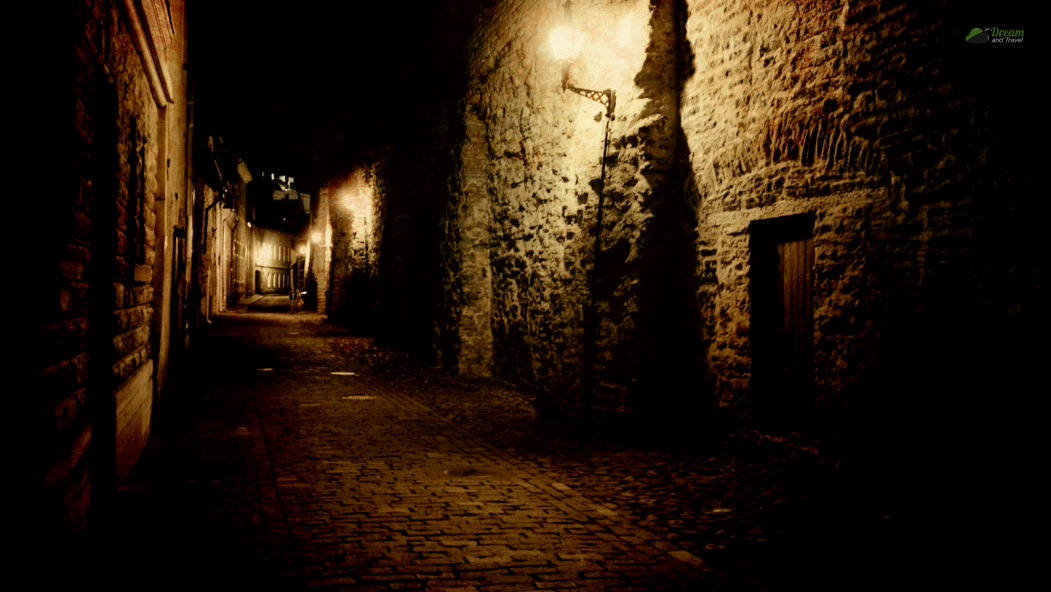
With surrealism completing its centennial this year, it’s coincidental that we are talking about dark tourism.
To explain further, dark tourism gives you a surreal experience and sometimes a chill down your spine.
The market data for the dark tourism sector shows that many people are enjoying it today. It is not delightful for certain, but it is something that hooks you.
| The book Dark Tourism: The Attraction to Death and Disaster by Malcolm Foley and J. John Lennon made the first mention of the word, Dark Tourism. |
Also, the 2018 Netflix documentary, The Dark Tourist, highlights how some people find educational aspects related to death, tragedies, and dark incidents when visiting places.
What is Dark Tourism?
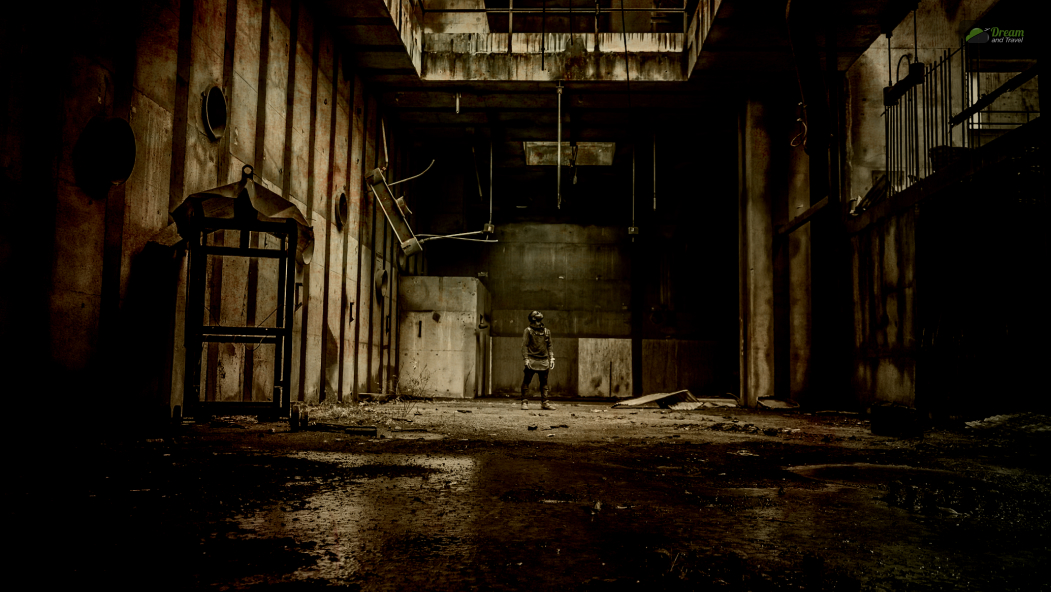
Dark tourism is visiting places associated with tragic or scary incidents.
These incidents can be from the remote past, or they can be occurrences that have taken place recently.
John Lennon, a professor of tourism at Glasgow Caledonian University in Scotland and the co-author of Dark Tourism: The Attraction to Death and Disaster, had an interesting take on “what is dark tourism.” He told the Washington Post,
| “It’s not a new phenomenon. “There’s evidence that dark tourism goes back to the Battle of Waterloo where people watched from their carriages the battle taking place.” |
Further, we get another viewpoint on dark tourism definition when we hear Philip Stone say,
| “I think, for political reasons or cultural reasons, we are turning to the visitor economy to remember aspects of death and dying, disaster. There is a kind of memorial mania going on. You could call that growth in dark tourism. We’ve just got this cultural fascination with the darker side of history; most history is dark. I think when we go to these places, we see not strangers, but often we see ourselves and perhaps what we might do in those circumstances.” |
To develop a thorough understanding of what dark tourism is, we also need to understand that these tourism sites are not similar.
Also, some may wish to travel to places of war and battles. Some others may want to be at nuclear plants where human lives are lost.
In this context, you must remember how Ukraine once tried to attract tourists to Chernobyl.
Today, we can divide dark tourism into the following categories.
- Disaster Tourism
- Prison Tourism
- Battlefield Tourism
- Cemetery Tourism
- Ghost Tourism
- Holocaust Tourism
However, a traveler interested in dark tourism must respect the history and the dark side associated with the site.
At the least, they should have a sensationalist approach.
Why Is Dark Tourism Popular?
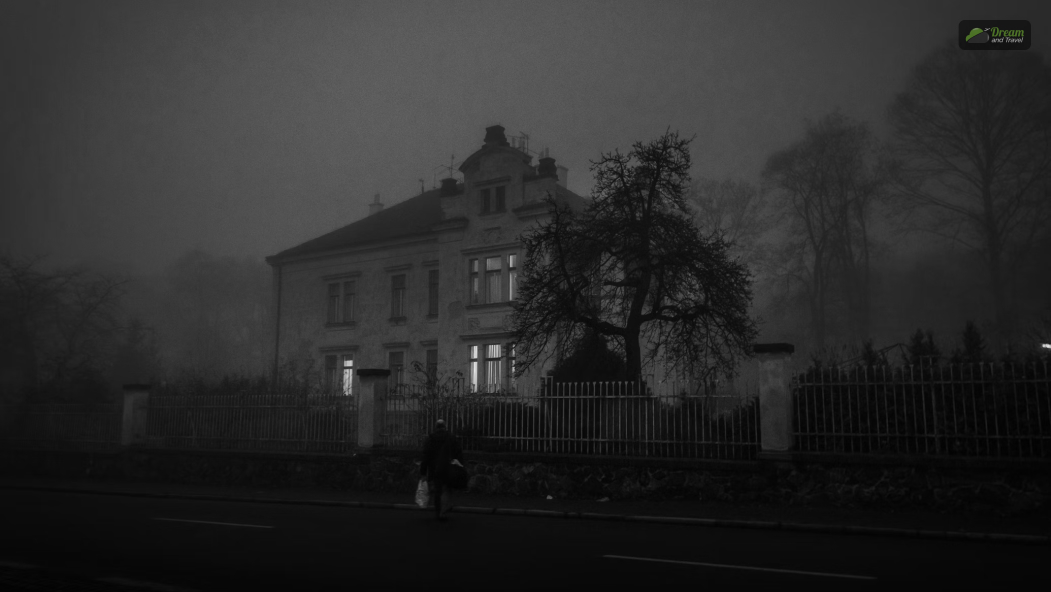
I have already mentioned Dark Tourist on Netflix, and another popular influence on dark tourism has been Chernobyl, a mini-series on HBO.
Following this HBO mini-series, travel companies experienced a 60% increase in the number of visitors to Chernobyl in 2019. The number of visitors in 2019 showed a straight 30% increase compared to the numbers in May 2018.
In addition, today, there are platforms like “www.dark-tourism.com,” working as a comprehensive guide to worldwide dark tourism destinations.
But finding an answer to “why is dark tourism popular” is much more complex and layered than the impact of popular influences.
It has different psychological and societal aspects. Moreover, a Travel News survey in 2022 says that 91% of Gen Z people have been involved in dark tourism.
| In 79 AD, Pompeii faced a devastating volcanic eruption. After that, it became a site of tourist attraction. The Paris Morgue became a popular tourist destination in the 19th century. Initially, people visited it for the identification of dead bodies from the street. However, with time, thousands of people visited this site. |
So, let’s find out the societal and emotional aspects behind visiting these places of tragedy.
‣ Feeling Of Curiosity And Connection
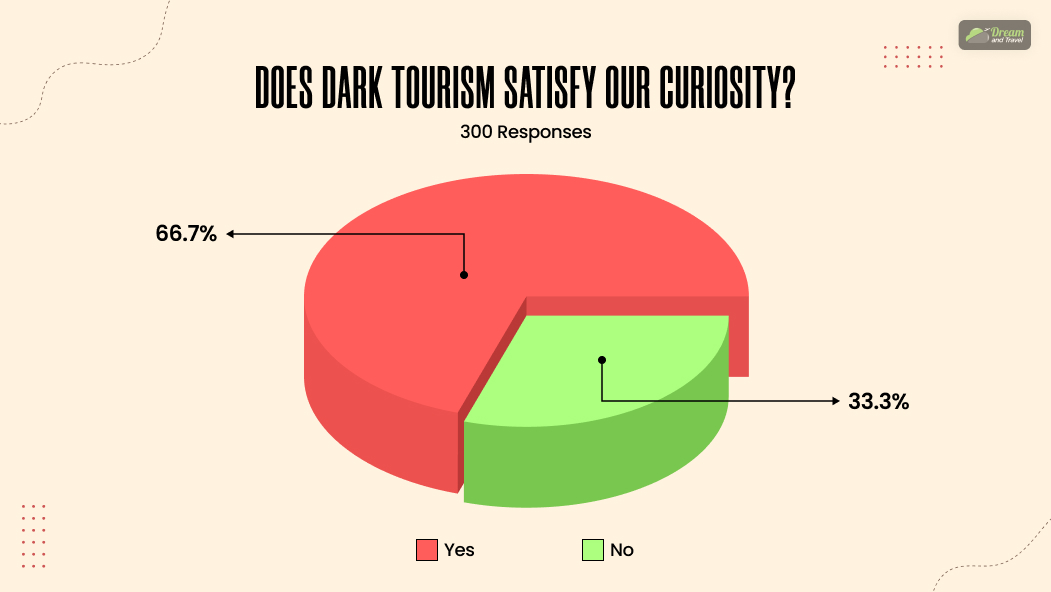
The first thing that makes dark tourism popular is curiosity.
Once something happens at a place, we are willing to know about it.
Further, often, a tragic incident changes the landscape and everything about a place.
We may feel a connection to that change or that place. Also, we may want to build a new connection to the place.
Other feelings or emotions that promote dark tourism are horror, empathy, and a sense of feeling alive.
Recently, I have surveyed 300 people on dark tourism. All of them were between the age group of 26-35.
Among the persons to take surveys, 57% were women. The question I asked was, “Does Dark Tourism Satisfy Our Curiosity?” 66.7% of them answered “Yes.”
Social Media Impact (Getting Into A Morally Grey Area)
In this world of social media and content creators, dark tourism can be about making videos or reels.
The video of Logan Paul after he found a body in Aokigahara Forest, Japan, is a glaring example of how we are using a visit to a place known for its highest suicide rate.
In 2019, there was another incident where the museum organizers had to request the visitors to Auschwitz to remain respectful to the victims of the Holocaust.
Many visitors were capturing photographs on the train tracks leading to the concentration camp.
| When these incidents occur for social media content creation or many people flock to a particular place of tragedy, being influenced by a particular video or reel, it can become unethical. Visiting these places and clicking selfies or pictures will be as insensitive as making a daily vlog at a funeral gathering. Thus, social media brings into a morally grey area that questions the ethical aspects of dark tourism. Also, it tends to become voyeuristic. |
‣ Educational Purposes
Visiting a place of tragedy can be solely about gathering information, first-hand information, or educational purposes.
For example, a visit to the Cellular Jail in the Andaman Nicobar Islands can be a part of a historical tour for any student or scholar.
‣ Fuels Fascination With Macabre
We all love stories of gore and horror! Don’t we?
Sometimes, the line between ethical and unethical gets blurred.
We also often deal with complex emotions stirred by various incidents.
So, we never know how one incident will fuel our fascination with the macabre and how we may make an effort to build a connection with it.
There is nothing good or bad about it! Heather Lewis, an assistant professor at Troy University, has pointed out that “dark tourism” is not bad if it is properly managed.
She says,
“The overall concern that we should have with dark tourism is making sure that we are being ethically and morally upright in the marketing and use of these locations as a dark tourism destinations. We should never seek economic gain by exploiting others’ suffering and loss.”
‣ Political Reasons
If you read Dean MacCanell’s model of sacralization, you will find enshrinement is a popular stage.
However, enshrinement may seem to be closer to the religious aspect of promoting tourism; it is also somewhere political.
Through enshrinement and its earlier stages, such as naming, framing, and elevation, a political party or the administration can dictate what to remember and what to forget.
The significant dead in a tragic incident can be a pawn in someone’s political interest. It’s unfortunate, but dead bodies do become spectacles in modern societies.
We have seen this in Sri Lanka recently. After the Civil War, there was a selective memorialization of war that promoted (dark) tourism in Sri Lanka.
This was an effort to appease the Sinhala majority and establish the valor of the army.
2. The Psychology Behind Dark Tourism (It’s Shocking)
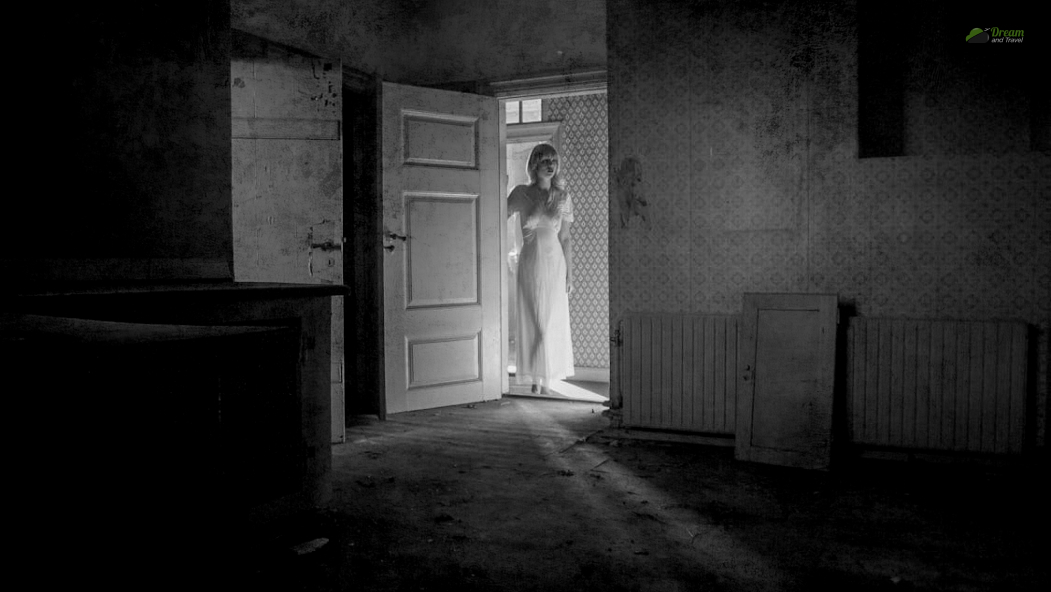
Before I get into the psychology behind dark tourism, let me share some shocking data about the people interested in it.
A dark tourism study says that 65.4% of the people engaged or interested in it are female.
Further, people between the ages of 25 and 34 were most interested in dark tourism, constituting a result of 44.2%.
Do these results related to demography indicate something about the psychology of a specific gender or age group? Let’s find out!
What Drives Interest in Dark Tourism?
We have already discussed how curiosity, willingness to build connections, and eagerness to know have contributed to the popularity of dark tourism.
However, it is also essential to know about the personality of the people inclined to visit places of tragic incidents for reasons other than educational purposes.
In “Pleasure through Pain: An Empirical Examination of Benign Masochism in Tourism,” Kock F., Karpen I.O., Josiassen A., and Nørfelt A. write that the dark triad of Machiavellianism, narcissism, and psychoticism are present in the personality of a dark tourist.
You will find the same opinion in the “Best M. Norfolk Island: Thanatourism, history and visitor emotions,” and many other publications.
However, understanding the personal characteristics of dark tourists is complex. There is vulnerability, hostility, self-hatred, rumination, and much more!
| Psychological Traits | Connection to Dark Tourism |
| Psychological Vulnerability | Due to psychological vulnerability, people seek external validation to fight difficult situations and emotions. |
| Hostility | The easiest form of hostility in one’s behavior can be anger. Cumulative negative thoughts and emotions get expressed through words and actions of anger. |
| Self-hatred | Self-hatred causes extreme emotional turmoil. Thanks to excessive self-evaluation, a person starts to think of themselves as “worthless” and remain agitated. |
| Rumination | Rumination is when someone constantly thinks of their distress. These thoughts do not lead to any solution and are not goal or situation-oriented. This is an intrusive psychological state distracting one from one’s goals or tasks. |
Understanding the psychological aspects behind dark tourism is crucial to having a better idea about dark tourism practices worldwide.
Further, you cannot just label emotions as good or bad or negative or positive. You need to understand them, and here, acknowledging these emotions is a major part of exercising wellness in dark tourism.
Understanding Moral Emotions In Dark Tourism (With Special Focus On Children)
Understanding moral emotions in dark tourism is critical as educational purposes seem to be major motivations behind dark tourism.
So, often, students of schools and colleges take part in this activity.
Further, the cultural, historical, political, natural, and other tragic incidents on a site can play a major part in how a person (especially a child) will develop an assessment of self, a group, or others.
In other words, the not-so-ideal occurrences on dark tourism sites have massive potential to trigger moral emotions such as empathy, anger, gratitude, and guilt.
Here, we have categorized moral emotions in dark tourism into four types: Self-conscious emotions, Other-praising emotions, Other-condemning emotions, and Other-suffering emotions.
The table below explains them better.
| Direction/Orientation of Moral Emotions | Emotions |
| Self-conscious emotions | ‣ Pride ‣ Embarrassment ‣ Shame ‣ Guilt |
| Other-praising emotions | ‣ Admiration ‣ Elevation ‣ Gratitude |
| Other-condemning emotions | ‣ Disgust ‣ Anger |
| Other-suffering emotions | ‣ Sadness ‣ Sympathy ‣ Empathy ‣ Compassion |
All these moral emotions play a vital role in determining how a person defines themselves, chooses the group he wants to be a part of, and develops political affiliations.
3. The Economic Impact of Dark Tourism| How Does Dark Tourism Affect Local Economies
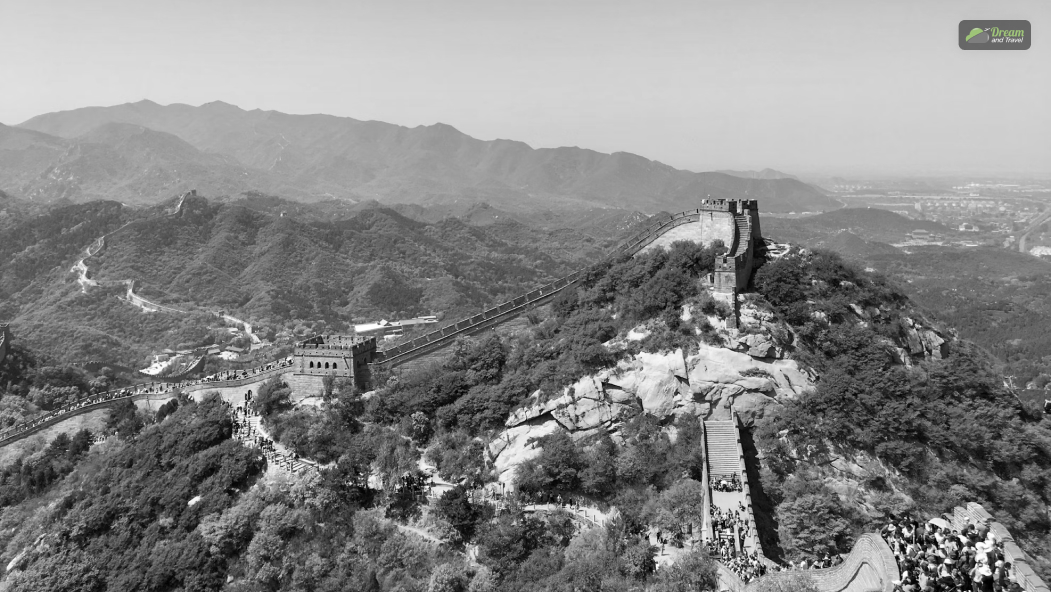
Dark tourism can yield a positive economic impact on local communities through job creation and revenue boost.
Further, you can scale the effect by properly marketing or packaging the tour.
When done right, dark tourism can be a powerful marketing tool for the economic growth of your community and country.
Let me give you some examples. Then, I will discuss country-wise revenue growth for dark tourism and its reasons.
‣ Case Study 1: The Voodoo Dark Tourism Of Haiti
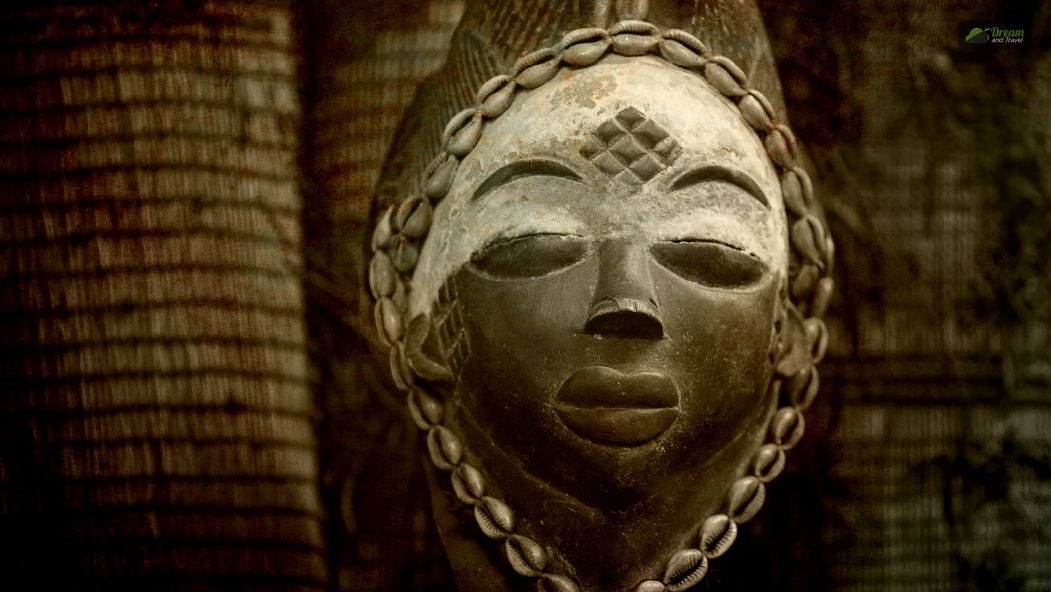
Destination Marketing Organisation used the black mambo in their first logo. Black mambo in the Voodoo region of Haiti is a female high priest.
Thus, Destination Marketing Organisation wanted to establish the African origin of Haiti.
Haiti became the first republic in the world, and religion is at the core of the Haitian society.
Further, all Haitians practice Voodooism, a religion associated with many dark stories and supernatural activities.
With an estimated travel and tourism revenue of US$266.70m for Haiti in 2029, cultural offerings play a significant role in the growth.
Voodooism, the main religion or the mainstay of Haitian lives, surely has a part to play in this as a major tourist attraction.
‣ Case Study 2: Fukushima Hope Tourism
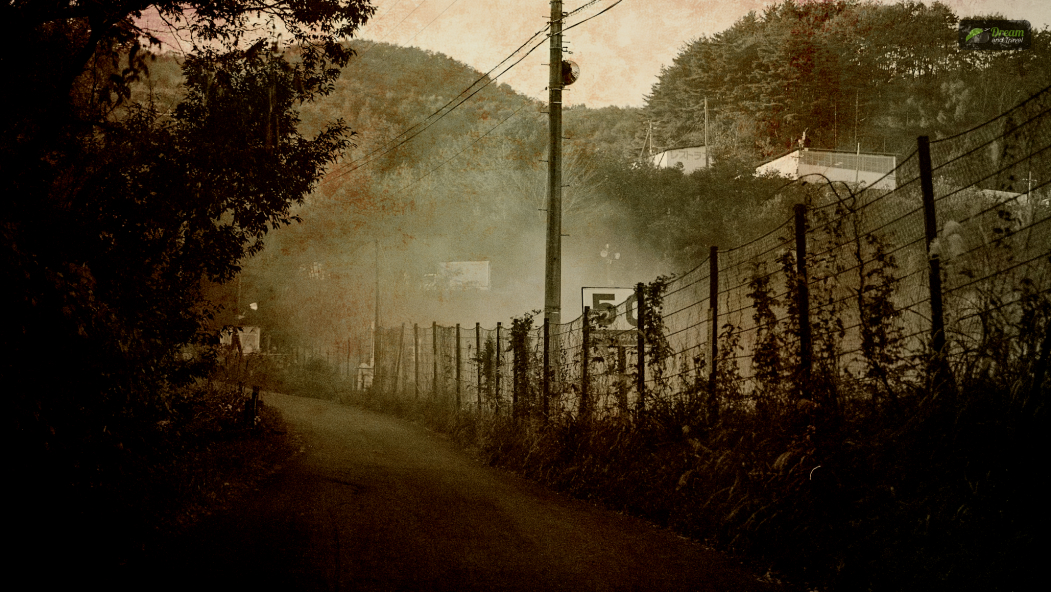
Fukushima Prefecture is the place where nuclear accidents are triggered by tsunamis and earthquakes.
It has repackaged or rebranded dark tourism to the site as “Hope Tourism.” It is a group tour that involves visiting the disaster-hit areas and learning about people who have risen from the ashes.
In 2022, this tourism program had 15000 participants.
Country-Wise Revenue Analysis Of Dark Tourism

India leads the dark tourism market revenue share with a CAGR forecast of 5.1% (2024-2034).
Other countries with the most estimated CAGR growth are China, Singapore, Canada, and the United States.
Let’s discover why dark tourism has become so big in these countries.
1. India (5.1% CAGR)
India is the land of 200 years of British colonial rule. No wonder it leads the chart in dark tourism.
Many places in India, including the Cellular Jail and Jallianwala Bagh, are witnesses to mass killings and atrocities.
Further, being an ancient land, it is home to many occult practices, cultures, and haunted places.
So, no other country has an ideal setup than India for dark tourism.
2. China (4.7% CAGR)
China has places like the Nanjing Massacre Memorial and the Great Wall of China. These places tell the tales of human tragedy and massacre.
3. Singapore (3.8% CAGR)
Singapore also had a prolonged struggle for independence.
Further, the history of the country has many complex twists and turns.
Singapore has places like the Old Ford Factory and Changi Museum that promote dark tourism.
4. Canada (2.3% CAGR)
Canada, as a country, is committed to exploring its historical narratives.
Tourism is crucial to Canada’s economy, and it wants to present its history to international visitors.
So, the museums of human rights and many sites, including the Halifax Explosion Memorial, are popular dark tourism attractions in the country.
5. The USA (1.5% CAGR)
Dark tourism is an effective way to know the history of the USA.
Today, Ground Zero (known for the 9/11 attack) and Alcatraz Island (known for the incarceration and imprisonment of notorious offenders) are two of the most visited dark tourism sites in the world.
Revenue and Job Creation In Dark Tourism | Understanding Community Engagement
Community engagement in dark tourism is crucial in two aspects.
It has a positive economic impact. Also, it promotes sustainability.
Companies/organizations/authorities managing dark tourism can have the following approaches to local and social developments that ultimately have a positive impact on local dark tourism.
- Job creation in tourism activities or services
- Agreements to share revenues on a partnership basis
- Offering economic and social support for an overall community growth
Every effort made in community engagement works toward creating a positive ecosystem around the tourism site.
It is useful for attracting more tourists.
4. Ethical Considerations in Dark Tourism

There are three main ethical concerns about dark tourism.
The critics of this tourism trend say that there is a massive exploitation of human tragedy.
Further, there is the commodification of grave history and unnecessary sensitization around them.
So, there is a major gap between how we should maintain the sanctity of human history and how many associated with dark tourism are dealing with it.
Further, dark tourism may not be environmentally ethical for a site or community.
It can damage the local ecosystem, promote over-damage of resources, and cause air, landfill, and water pollution.
However, these ethical concerns about dark tourism are nothing new.
“For as long as humans have travelled for leisure, they have travelled to watch death, to view cadavers and relics. Roman Gladiatorial games attracted crowds from around the Empire; medieval European pilgrimages to Christian relics of death sites were common; nineteenth-century tourists and locals visited Parisian morgues which could see 40,000 visitors per day.”
For me, however, it is not as simple as black and white. It is rather a murky territory that needs careful engagement.
Ultimately, it is upon us, and if we handle it correctly, we can explore the educational aspect of dark tourism better.
Is Dark Tourism Exploitative? (You Cannot Package Dark Tourism Around The Binary Of Good And Bad)
Dark tourism is much beyond exploiting the fascination with macabre these days.
You have to acknowledge how it has become a part of tourism and a process of learning.
Further, even if dark tourism is majorly associated with places of violence, it is not possible to label it as ethical or unethical or package it in the binary of good and evil. There are two major concerns in this.
1. The Groups Of Victims And Perpetrators Are Not Static
In most human conflicts, it is easy to label someone as a victim and the other as a perpetrator.
Often, the politics of a nation or a particular side plays a critical role in weaving more than one version of the same incident.
However, in many scenarios, the groups of victims and the wrongdoers are not exclusive or static, and there is often dishonesty or half-truths when presenting specific incidents.
This is where the concern of exploitation comes in. Twisting or changing human history for political gain!
2. Which Version Of The Story You Are Listening To
Let me explain this to you with an example. In 2013, the Maze Prison in Northern Ireland was proposed to be transformed into a peace center as the “International Centre for Conflict Transformation.”
However, the idea was later abandoned as many called it an attempt to glorify terrorism. (The First Minister Michelle O’Neill and Deputy First Minister Emma Little-Pengelly met the Maze Long Kesh Development Corporation on 15th August 2024 to decide the site’s fate.)
Here, you can clearly notice how one side wants to present it as a place of peace or a transformation of conflicts.
The other party, however, perceives it as hero-worship terrorist acts.
Similarly, in many cases, the story of a place or occurrence changes with the voice you are listening to. Moreover, memories or incidents are multi-layered.
We often become habituated to one version of the story, which has been reiterated over the years. Thus, it becomes a part of our social or collective memory.
If you are only listening to the voices you are cajoled to listen to by bigger political or commercial orchestration, you are being exploited as a tourist.
However, as a visitor to the place, if you are keen to explore the multifaceted aspects, you are actually making the most of your opportunity to see an incident of history in a different light.
| Is Dark Tourism Exploitative: What’s The Buzz? “This delves a lot into the greyness of our society. Therefore, answering this question with a simple yes and no won’t be enough. I believe whether this form of tourism is exploitative depends on whether it has been commercialized or, worse, advertised. For example, if you are profiting from a major tragic incident with the mode of tourism. Selling tickets and bringing tourists through the macabre curiosity becomes exploitative. But if someone is visiting the place with the utmost respect and curiosity to see a historical site, then it leans less toward the exploitative.” – Deepanwita Dey – A PG Student of Psychology and a Writer. |
How to Practice Dark Tourism Responsibly
You have to tread carefully while visiting dark tourist sites.
Standing in a place like the Jallianwala Bagh or the Andaman Cellular Jail, you may listen to the cries of the past.
The weight of the past and the unheard human voices can really weigh you down. It is completely okay to feel emotional or tears roll down your cheeks at such places.
These emotions show your connection to the incidents that occurred and the places of tragedy. However, there are other things you need to be mindful of.
‣ Watch Out Where You Are Taking The Photographs
You cannot just take photographs randomly in a place related to tragic history. Taking photographs before a gas chamber, an asylum, or a prison can be the most insensitive activity.
Also, before you take out your camera, know where it is allowed by the authority. Moreover, if you are clicking the picture of a person, don’t forget to ask their permission.
‣ Use Your Experience As A Force For Good
If you feel weighed down by the history of a place or community in a place, you can use your experience to do some good for the local people.
You can volunteer to be a part of a welfare program or be a part of the beautification of the site with small donations or direct participation.
‣ Leave No Trace Behind
Leaving no trace behind is an essential part of sustainability and responsible practices you need to follow in dark tourism.
You don’t have to leave graffiti or trash on the site. Further, don’t smoke or cause damage to the local vegetation or any dilapidated architecture during your visit.
4. Notable Dark Tourism Destinations

Here are the top 10 dark tourism destinations in the world.
- Auschwitz-Birkenau State Museum, Oświęcim, Poland
- Hiroshima Peace Memorial Museum, Hiroshima, Japan
- Karanji War Memorial, Singapore
- Madame Sherri Forest, Chesterfield, New Hampshire
- The Ruins of Pompeii, Italy
- The Cellular Jail, Andaman and Nicobar Islands, India
- Jallianwala Bagh, Amritsar, Punjab, India
- Nanjing Massacre Memorial, China
- The Great Wall Of China
- Old Ford Factory, Singapore
There are thousands of dark tourism destinations spreading across the seven continents of the world.
You can visit dedicated dark tourism guides like “https://www.dark-tourism.com/” to find more dark tourism sites.
Dark Tourism in the USA
The USA is one of the top-most countries in dark tourism.
The rich history of the country and the preservation of the memorials have helped the country attract tourists interested in human lives and the incidents of the past.
Here are the best dark tourism USA sites, with a brief note about them.
‣ 9/11 Memorial And Museum, New York

Who can forget the day (9/11/2001) when terrorists hijacked and crashed two planes into the Twin Towers of America?
This is one of the ghastliest attacks on the human race in recent times.
The museum opened in 2014, and today, it has the accounts of the survivors, stories of how America rose from the ashes after the incident, and other details.
‣ Alcatraz Island, California

Alcatraz Island, or Alcatraz Federal Penitentiary, was one of the most infamous prisons in America.
It had harsh conditions and stringent security measures, making it difficult for the prisoners to escape. So, it was also known as “The Rock.”
‣ USS Arizona Memorial, Pearl Harbor, Hawaii

The battleship USS Arizona and the people who died in the Pearl Harbor attack rest in the USS Arizona Memorial, Pearl Harbor, Hawaii.
It is a dark tourist site that is visited with an eagerness to know the history, and it is especially an account of the loss of human lives during World War II.
‣ Badlands National Park, South Dakota

You must have heard of Badlands National Park, South Dakota, for its amazing geology and stargazing attractions.
However, do you know why it is a popular dark tourism site?
- The spine-chilling cries of a woman are heard in this park.
- Many people claim that the spirit of that woman roams in the park.
- Many hikers have gone missing in the park.
So, amidst stars and planets, some dark stories are being weaved in Badlands National Park.
‣ Zak Bagans’ Haunted Museum, Las Vegas, Nevada
Zak Bagans’ Haunted Museum is one of the best dark tourism places in the USA, thanks to its cursed and possessed (?) collections. Amidst the endless stuff, you can see the following items in the museum.
- Dybbuk Box, the most haunted object in the world (Watch the 2012 film “ The Possession” if you don’t know what it is!)
- The Murder Kit of America’s Most Notorious Serial Killer, Ted Bundy
- Propofol Chair (Michael Jackson died while he was seated on this chair)
The hallways are dimly lit, and many hidden passages lead you to the most haunted objects.
6. The Future of Dark Tourism
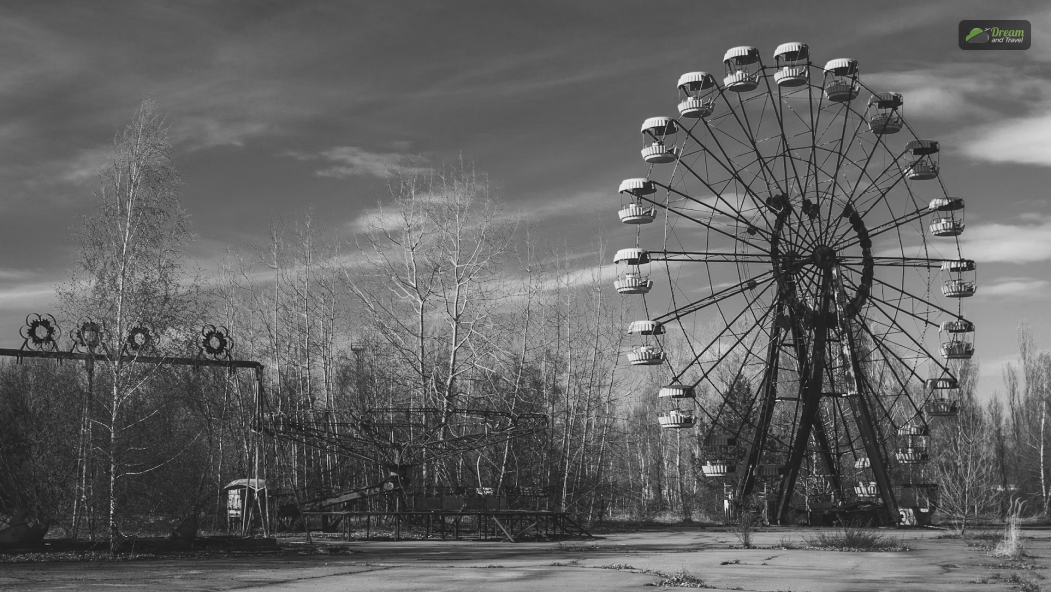
Dark tourism can be a catalyst for change. The stories and sites of injustice can bring positive changes in you, as I discussed in the section “Understanding Moral Emotions In Dark Tourism.”
You never know how visiting the site of the Holocaust can inculcate in you the urge to get social justice.
Also, places like Chernobyl can make you feel the importance of preserving nature or the environment more deeply.
So, dark tourism has a promising future as an act of tourism, learning and preserving history. The market also looks promising, with the global dark tourism market to reach S$ 45.1 billion by 2032.
The table below shows what are the current and future driving forces behind the growth of dark tourism and what the restrictive forces are.
| Factors Behind The Growth of Dark Tourism | What Is Restricting Dark Tourism? |
| ‣ Spiked cultural interests in history and local traditions ‣ Use of augmented reality (AR), virtual reality (AR), and multimedia applications in depicting the history of a place ‣ Economic growth and significance of dark tourism, creating job opportunities and contributing to local and national GDPs ‣ Government support to attract more tourists to dark tourism sites by improving infrastructure, research, and preservation activities ‣ Recognition of dark tourism as an educational opportunity by schools, colleges, and universities | ‣ Overtourism has a direct impact on the local community, landscape, and facilities and causes environmental degradation. ‣ Dark tourism can sensitize or commercialize morbid human history in the most insensitive way. ‣ It can be a taboo or stigma in certain cultures to talk about dark historical incidents. ‣ Dark tourism places can have unstable structures or unknown perils (especially in sites like nuclear disasters). Thus, visiting these sites can have security concerns. |
Dark tourism today is not limited to memorials and war fields only.
Today, guided or designed dark tourism tours are conducted using interactive installations or multimedia presentations to make dark tourism a more diversified experience.
Further, future trends in dark tourism, including the use of technology and sustainability practices, aim to make it more profitable and rewarding.










